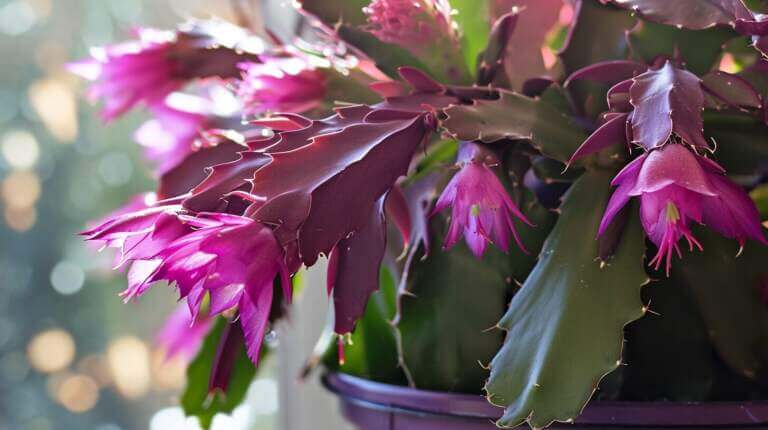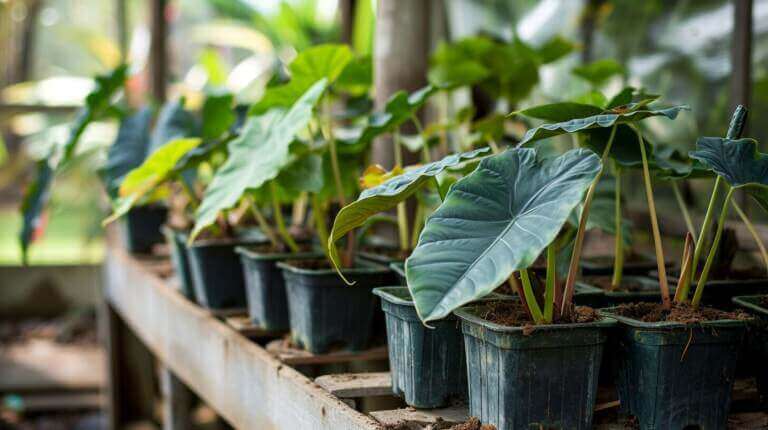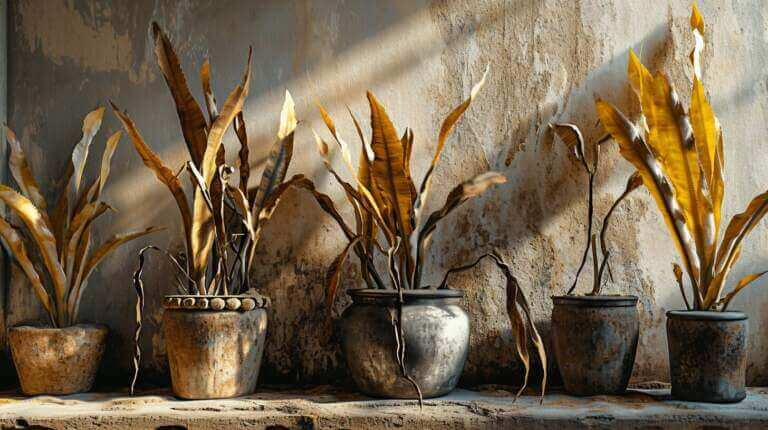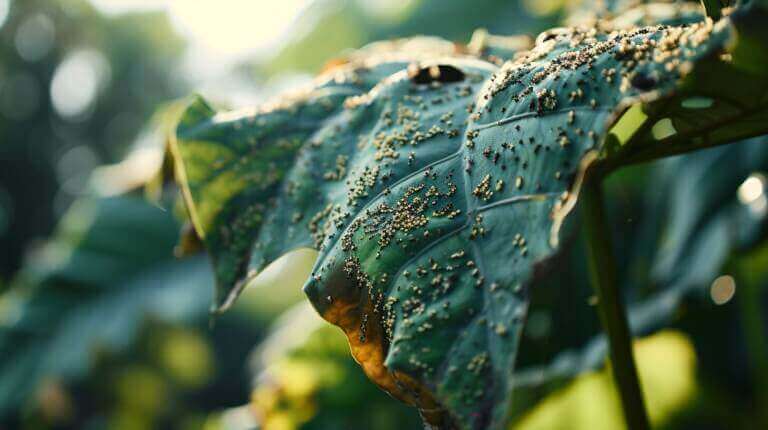Is it Normal for Fiddle Leaf Figs to Drop Leaves? What to Expect
One of the first signs of trouble in a fiddle leaf fig is dropping leaves. Fiddle leaf figs are prone to leaf loss when they’re stressed, and it’s important to figure out the cause in order to address the problem. There are three main causes of leaf drop in fiddle leaf figs: shock from being moved, dry conditions, and root rot. Shock from being moved can cause older leaves near the middle and bottom of the plant to drop. Dry conditions, including lack of watering and very dry air, can also lead to leaf drop. Root rot, often caused by overwatering and lack of light, is another common cause. It’s important to provide consistency in light, humidity, and watering in order to help your fiddle leaf fig recover and prevent further leaf drop.
Key Takeaways:
- Fiddle leaf figs may drop leaves when stressed, but it’s important to identify the cause.
- Shock from being moved can cause leaf drop, so provide stability in the new environment.
- Dry conditions, including lack of watering and very dry air, can lead to leaf drop. Maintain consistent humidity and avoid dry environments.
- Root rot, caused by overwatering and lack of light, is another common cause. Prevent root rot by ensuring proper drainage and lighting.
- Consistency in light, humidity, and watering is key to helping your fiddle leaf fig recover and preventing further leaf drop.
Why Fiddle Leaf Fig Tree Bottom Leaves Are The First To Go
When a fiddle leaf fig plant experiences leaf drop, it usually starts with the bottom leaves. This common problem happens because the lower leaves are the oldest and have been exposed to less light due to their position on the plant. As the new leaf growth at the top of the plant receives more light, the older leaves below may no longer receive sufficient sunlight, causing them to deteriorate and eventually fall off.
It’s important to note that if your fiddle leaf fig is losing leaves from the bottom up, it doesn’t necessarily mean there’s a problem. However, if the leaf drop is excessive or accompanied by other signs of stress, such as yellowing or wilting leaves, it could indicate an issue that needs attention.
To maintain a healthy fiddle leaf fig and minimize leaf drop, ensure that your plant is receiving adequate light, water, and nutrients. Place it in a spot with bright, indirect light and rotate it regularly to ensure even exposure. Water your fiddle leaf fig when the top inch of soil feels dry, being mindful not to overwater. And provide a balanced fertilizer during the growing season to support proper growth.
Remember that leaf drop is a natural process, and some level of shedding is to be expected. However, if you notice consistent and excessive leaf drop, it’s worth investigating further to ensure your plant’s overall health and well-being.
Healthy Fiddle Leaf Drop vs. Warning Signs
Identifying healthy leaf drop
As a fiddle leaf fig owner, it’s essential to understand that leaf drop is a natural process for these plants. Fiddle leaf figs naturally shed their older leaves to make room for new growth. This is healthy and expected behavior for these plants.
When a fiddle leaf fig drops leaves naturally, you will notice that the older and lower leaves are the ones that first show signs of deteriorating and falling off. This is because these leaves have received less light due to their position on the plant. The new growth at the top of the plant receives more light, allowing it to thrive and overshadowing the older leaves below.
Recognizing signs of health problems
While some leaf drop is normal for fiddle leaf figs, excessive leaf drop or signs of stress in conjunction with leaf loss could indicate underlying health problems. It’s important to be able to recognize these signs to address any issues promptly.
If your fiddle leaf fig is dropping leaves excessively, meaning more than a few at a time, or if the leaves are yellowing, wilting, or becoming discolored, it may indicate a problem. These signs could be due to issues such as underwatering, overwatering, inadequate light, poor soil conditions, or pest infestations.
To ensure the health and well-being of your fiddle leaf fig, here are some steps you can take:
- Adjust watering: Make sure you are watering your plant appropriately, allowing the top inch of soil to dry out between waterings. Avoid overwatering, as this can lead to root rot and other issues.
- Assess light conditions: Fiddle leaf figs thrive in bright, indirect light. If your plant is not receiving enough light, consider moving it to a spot with more natural light or providing supplemental grow lights.
- Check soil quality: Ensure that your fiddle leaf fig is potted in well-draining soil to prevent waterlogging and root rot. Consider repotting if the soil is compacted or retaining too much moisture.
- Monitor pests: Common pests for fiddle leaf figs include mealybugs, spider mites, and scale insects. Regularly inspect your plant for signs of infestation, such as sticky residue, webbing, or small insects, and take appropriate measures to control and eliminate the pests.
To ensure the health and well-being of your fiddle leaf fig, here are some steps you can take:
- Adjust watering: Make sure you are watering your plant appropriately, allowing the top inch of soil to dry out between waterings. Avoid overwatering, as this can lead to root rot and other issues.
- Assess light conditions: Fiddle leaf figs thrive in bright, indirect light. If your plant is not receiving enough light, consider moving it to a spot with more natural light or providing supplemental grow lights.
- Check soil quality: Ensure that your fiddle leaf fig is potted in well-draining soil to prevent waterlogging and root rot. Consider repotting if the soil is compacted or retaining too much moisture.
- Monitor pests: Common pests for fiddle leaf figs include mealybugs, spider mites, and scale insects. Regularly inspect your plant for signs of infestation, such as sticky residue, webbing, or small insects, and take appropriate measures to control and eliminate the pests.
Common Reasons Why Fiddle Leaf Fig Is Dropping Leaves
As a fiddle leaf fig owner, it’s important to understand that leaf drop is a natural process for these plants. Fiddle leaf figs naturally shed their older leaves to make room for new growth. This is a healthy and expected behavior for these plants.
Environmental factors affecting fiddle leaf fig leaves fall
Several environmental factors can influence the leaf drop of a fiddle leaf fig. Here are some of the most common ones:
- Light: Fiddle leaf figs thrive in bright, indirect light. If the plant is not receiving enough light, it may start shedding leaves to redirect its energy towards the new growth at the top of the plant. On the other hand, if the plant is exposed to too much direct sunlight, it may also result in leaf drop.
- Temperature: Drastic temperature changes or exposure to extreme temperatures can cause stress to fiddle leaf figs, leading to leaf drop. It’s important to keep the plant in a stable temperature range to avoid such issues.
- Humidity: Fiddle leaf figs prefer moderate to high humidity levels. If the air in your environment is too dry, it can cause the plant to lose moisture through its leaves, resulting in leaf drop.
- Watering: Overwatering or underwatering can both cause leaf drop in fiddle leaf figs. It’s important to find the right balance and water the plant appropriately, allowing the top inch of soil to dry out between waterings.
Common mistakes leading to fiddle leaf fig dropping leaves
While some leaf drop is normal for fiddle leaf figs, excessive leaf drop or signs of stress in conjunction with leaf loss could indicate underlying issues. Here are some common mistakes that can lead to excessive leaf drop:
- Overwatering: Watering the plant too frequently or allowing it to sit in waterlogged soil can lead to root rot and ultimately cause leaf drop.
- Underwatering: Not providing enough water to the plant can result in dehydration and leaf drop. It’s important to water the fiddle leaf fig consistently and ensure the soil is moist but not waterlogged.
- Improper lighting: Insufficient or excessive light can lead to leaf drop in fiddle leaf figs. Finding the right balance and providing the plant with the appropriate amount of light is crucial for its health.
- Poor soil quality: Fiddle leaf figs require well-draining soil to prevent waterlogging and root rot. If the soil is not suitable, it can affect the plant’s health and lead to leaf drop.
- Pest infestations: Common pests such as mealybugs, spider mites, and scale insects can cause stress to the fiddle leaf fig and result in leaf drop. Regularly inspecting the plant for pests and taking appropriate measures to control them is essential.
FAQ
Is it normal for fiddle leaf figs to drop leaves? What should I expect?
Yes, it is normal for fiddle leaf figs to drop leaves when they’re stressed. The plant may shed older leaves near the middle and bottom as a reaction to various factors such as shock from being moved, dry conditions, or root rot. It’s important to determine the cause and provide the right conditions to help the plant recover.
Why do fiddle leaf figs experience leaf drop from shock?
Fiddle leaf figs can experience leaf drop when they are moved to a new location. The change in lighting and humidity levels can be different from what the plant is accustomed to, causing it to shed older leaves near the middle and bottom. This is a normal reaction to the stress of being moved, but it’s important to provide consistency in the new environment to help the plant recover.
What causes leaf drop from dry conditions in fiddle leaf figs?
Leaf drop from dry conditions in fiddle leaf figs can be caused by lack of watering and very dry air. These plants prefer consistent humidity and do not thrive in overly dry environments. Regular watering and avoidance of direct sunlight and heating vents can help prevent leaf drop from dry conditions.
How does root rot cause leaf drop in fiddle leaf figs?
Root rot, often caused by overwatering and lack of light, can lead to leaf drop in fiddle leaf figs. Brown or black spots on the leaves may indicate root rot. Proper drainage, fast-draining soil, and providing the right amount of light can help prevent root rot and subsequent leaf drop. Immediate treatment for root rot and protection from bacteria, fungus, and insects are crucial to preventing further leaf drop.







